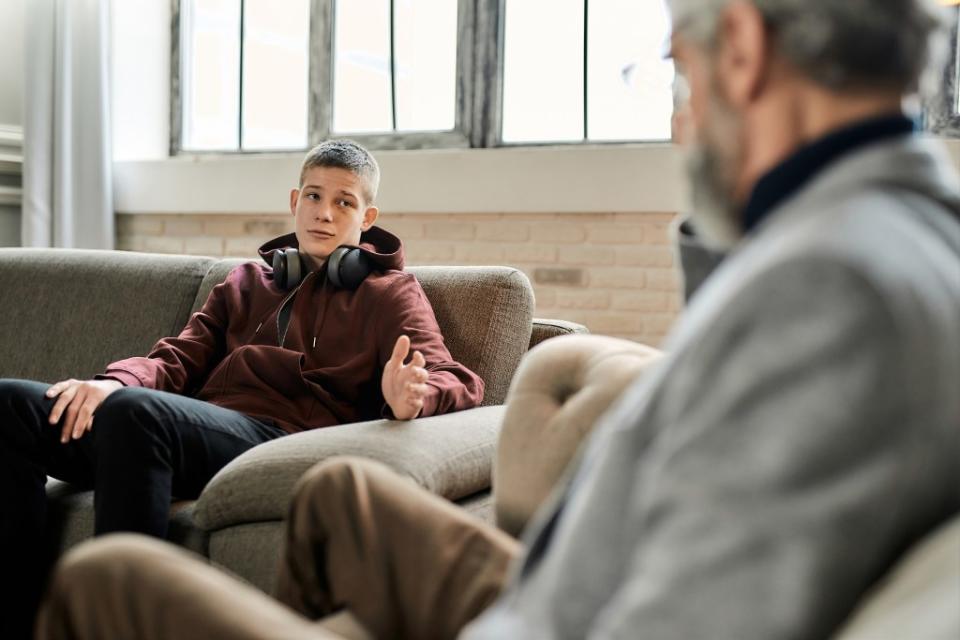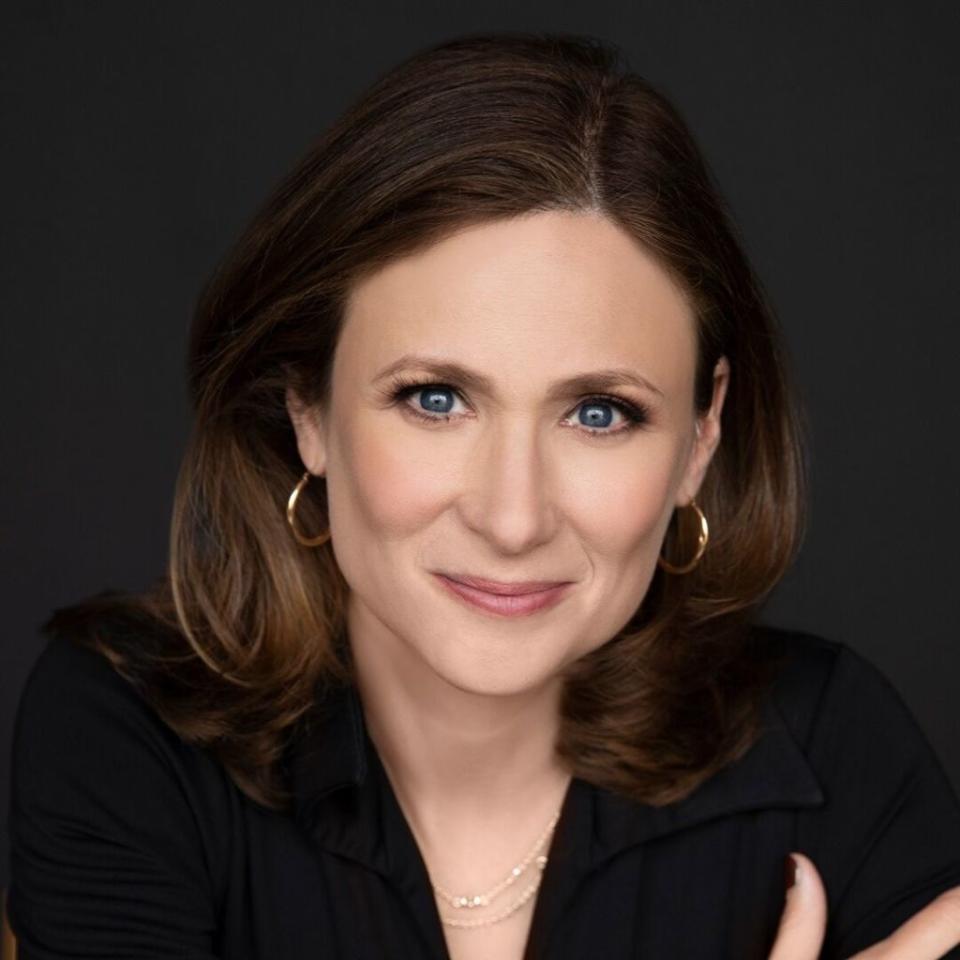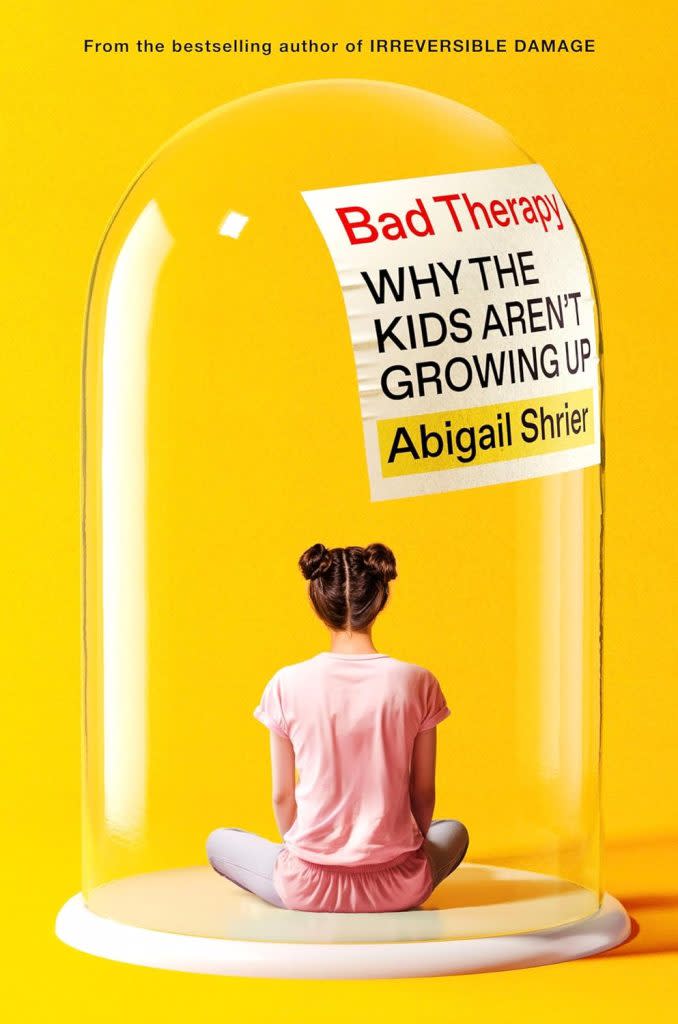Abigail Shrier breaks down America’s teenage mental health crisis

Nora, 16, is a fairly typical teenager. A high-school student from Southern California, she lives on Snapchat, has a mouth full of braces, sings in the school choir and a “large majority” of her friends are clinically depressed.
“I always have a friend who’s going through something super serious,” she told Abigail Shrier, author of the new book “Bad Therapy: Why the Kids Aren’t Growing Up” (Sentinel), out now. “I don’t know why it’s always that way.”
Most of Nora’s friends are in therapy and heavily medicated, and they struggle from a dizzying array of diagnosed (and self-diagnosed) mental illnesses.

“I’ve noticed with a lot of people who’ll use their mental issues, it’s almost like a conversation piece,” Nora admitted to Shrier. “It’s almost like a trend.”
Generation Z — those born between 1997 and 2012 — are not doing well.
Less than half of them would describe their mental health as “good,” with 42% of them diagnosed with a psychiatric disorder, and 39% going to therapy at least once a week.
“Teens today so profoundly identify with these diagnoses, they display them in social media profiles, alongside a picture and family name,” writes the author.
Shrier recalls a very different experience as a child.
She and her brother were spanked by their parents, she writes, and their feelings “were seldom consulted when consequential decisions about our lives were made. If we didn’t particularly relish the food set out for dinner, no alternate menu was forthcoming. If we lacked some critical right of self-expression . . . it never occurred to either of us. It would be years before anyone in my generation would regard these perfectly average markers of an ’80s childhood as vectors of emotional injury.”
The exact opposite is true for today’s children, who largely expect a world without pain or discomfort, either physical or emotional, and absolutely nothing that even hints at personal failure.
Kids are no longer “shy,” they have “social anxiety disorder.”
They aren’t “disruptive in school,” they have “oppositional defiant disorder.”

It’s not just young children affected by this.
Elder Gen Zers, now in their late 20s, are “utterly underprepared to accomplish basic tasks we expect all adults to dispatch,” writes Shrier.
Things like showing up for work, asking for a raise, and even making it through the day “without requiring extensive breaks to attend to their ‘mental health’ ” have become almost impossible for them, claims Shrier.
Beth, a psych nurse for three Boston-area universities, told Shrier that she routinely sees college kids whose “social anxiety” is so bad, it’s become crippling.
“Beth recalled that one college co-ed brought her mom along to the appointment,” Shrier writes. “The mom kept track of her daughter’s menstrual periods with an app on her phone.”
Evelyn, who runs a major lab at a biomedical research institution, told Shrier she often hires young researchers — the crème de la crème of medical graduate schools — who are all “very afraid. They’re afraid to be wrong. They’re afraid to crystallize an idea in the lab and then test it. It’s almost like they’d rather not start than find out that they’re not amazing.”
Schools have played a big role in the mental crisis of young people.
From elementary school and into college, the mental health staff at many educational institutions have grown, with a veritable army of psychologists, counselors, and social workers who’ve been trained to “understand ‘trauma’ as the root of student misbehavior and academic underperformance,” Shrier writes.
There’s also more wellness-tracking tech than ever before.
Apps like Myala, “available to any student over the age of 16,” according to its website, prompt users to “check-in” with their current mental state.
As Shrier discovered, the questions — which range from “How lonely do you feel?” to “How worried do you feel right now?” — seem almost designed to encourage a depressive state.

“If you’re not up for confessing to AI how lonely you feel, you’ll get a notification reminding you that you’ve failed at that, too,” Shrier writes.
Why are Gen Zers so stressed out?
There are a lot of theories, ranging from the trauma of pandemic lockdowns to white-knuckled worry over climate change.
But as Shrier notes, explanations change based on political biases.
“For conservative researchers, the rise of fatherlessness, the decline of marriage, or decreased religious affiliation — all of which coincide with climbing rates of mental illness — might seem rational explanations,” she writes. “For liberal researchers, climate change, school shootings, systemic racism, economic inequality, and the politics of MAGA” are what’s pushing a generation over the edge.
But ask an actual Gen Zer and they likely won’t mention any of the above.

Nora explained to the author that the things pushing her high school friends into mental illness aren’t all that remarkable: they include strained relationships with peers, breakups, and disagreements with parents.
In other words, all the things that every young person in the history of the human race have experienced.
Beth the nurse shared a similar story with Shrier, claiming that “not a single one” of the college kids she’s treated has concerns about climate change or systemic racism.
“So what reasons do they give for the pain they feel? Exam stress. Being overwhelmed by the work piling up,” writes Shrier. “Total inability to reach the expectations set by professors who — unlike the public school teachers they had before — may actually fail them if their grades warrant it.”

The stress culprits haven’t changed since you (or your parents or grandparents) were young, but the reasons it sends kids into a spiral of fear and anxiety certainly has.
Yulia Chentsova Dutton, who heads the Culture and Emotions Lab at Georgetown University, told Shrier that children in recent decades have been encouraged — by parents, teachers, and society in general — to be too self-aware of their feelings.
“Placing undue importance on your emotions is a little like stepping onto a swivel chair to reach something on a high shelf,” Shrier writes. “Emotions are likely to skitter out from under you, casters and all.”
The importance placed on personal happiness has also served to sabotage them.

“If you start your day by asking yourself whether you are happy, the result can only be that you’re not happy,” Michael Linden, a Berlin professor of psychiatry, told Shrier. “And then you think you need help to become happy. And then you go to a psychotherapist and he’ll make you really unhappy in the end.”
Shrier’s conclusion, after interviewing dozens of troubled teens and mental health experts, is that children need to experience more discomfort without the coddling attempts to soothe them.
“The purpose of childhood is to allow kids to take risks — things that involve getting all kinds of hurt — and to practice the skills they will need as adults while they are still safely under their parents’ roofs,” she writes.
Childhood is a time to experience all of the pains of adulthood but “in smaller doses, so that they build up immunity to the poison of heartache and loss,” Shrier writes.
As for whether a teenager needs therapy, Shrier suggests seeking out a counselor only if you’ve exhausted all other options.
If it’s unavoidable, “research the therapist as you would any surgeon,” she writes. “In all but the most serious cases, your child is much better off without them.”

